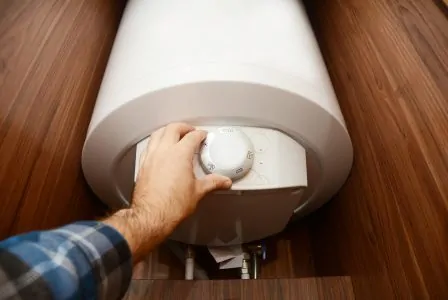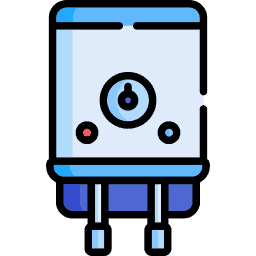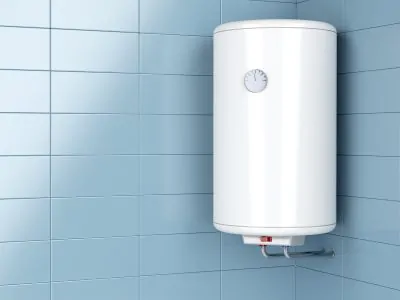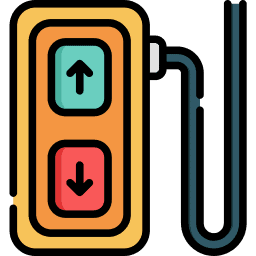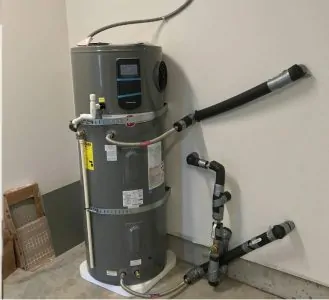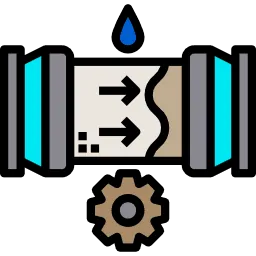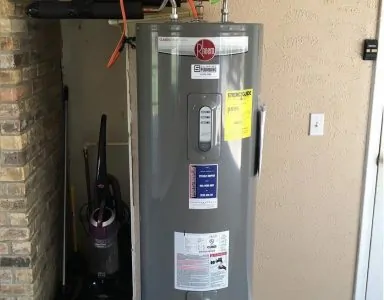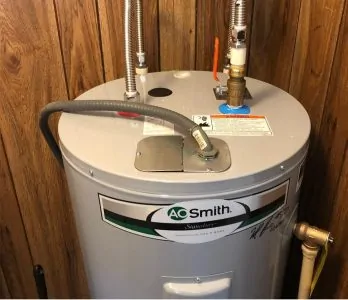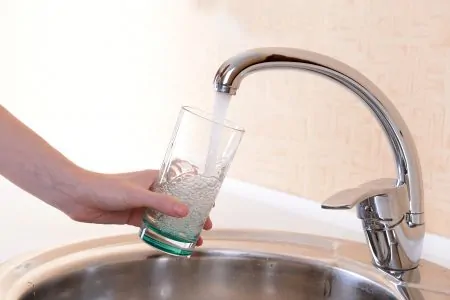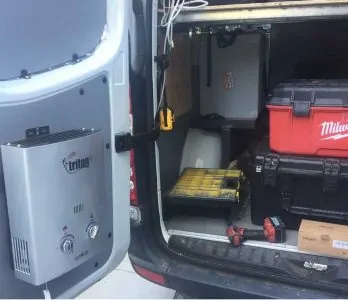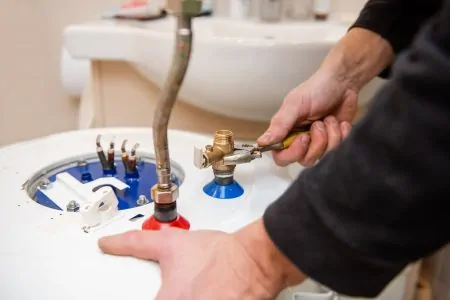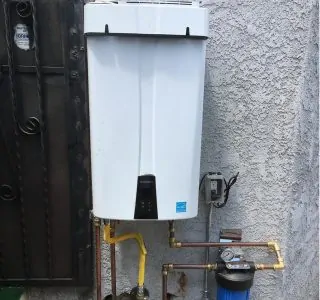If you’re looking for an energy-efficient way to heat the water in your home, a condensing water heater could be the answer. However, choosing which one to buy can be difficult.
After researching in every corner of the internet, we found what we believe are the 4 best condensing water heaters currently available.
To help you choose, we have highlighted heaters that are particularly safe, visually appealing, feature an exceedingly high flow rate, and one that is very small!
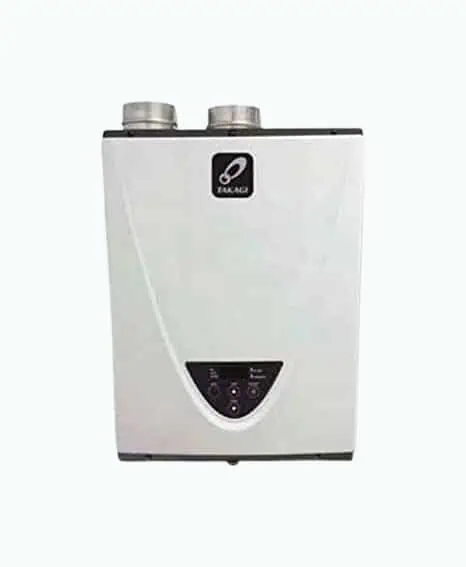
- High flow rate at 10 GPM
- Emits low amounts of NOx
- User-friendly digital interface
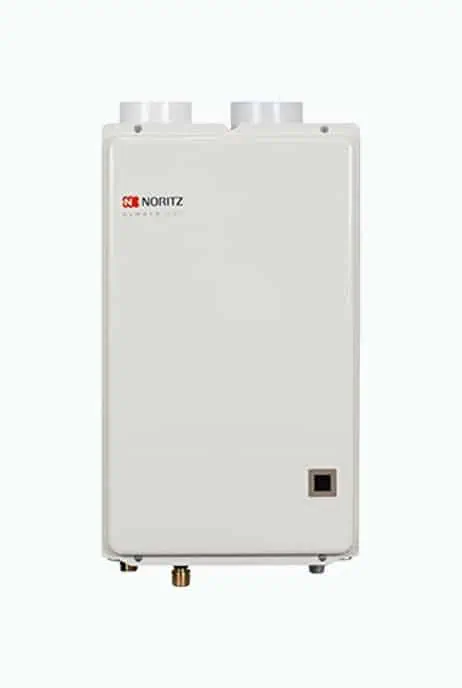
- Weighs just 39 lbs
- Remote controlled thermostat
- 12-year warranty
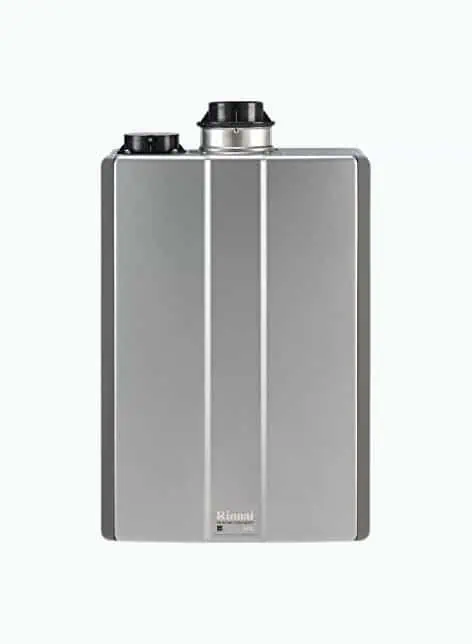
- Sleek metallic exterior.
- Remote interface
- 12-year warranty
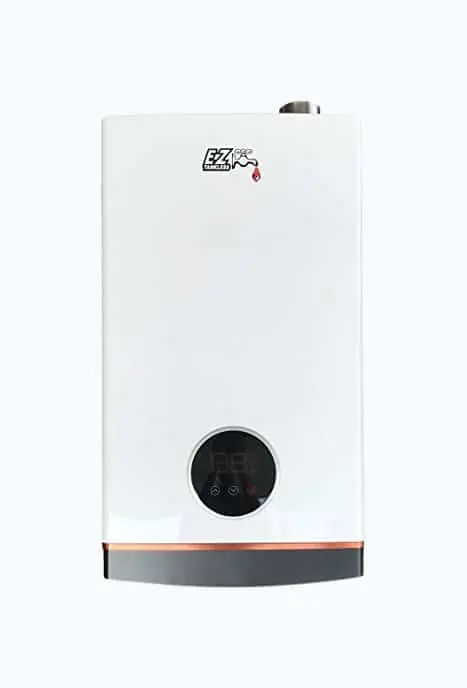
- Can be installed horizontally or vertically
- Fully automatic
- Works with low water pressure (8 psi)
Review Methodology: At Sensible Digs, we provide an in-depth analysis and hands-on assessment of the best condensing water heaters to ensure you make the right decision for your home. Our experienced professionals thoroughly research, test, and compare each product using a set of criteria and benchmarks to measure performance and rank them accordingly. We evaluate products from a user’s perspective, sharing quantitative data and first-hand findings to help you understand what sets each product apart from its competitors. Our comprehensive review covers the most important factors, such as energy efficiency, installation, capacity, maintenance, durability, and cost, to help you make an informed decision. We also delve into the design choices of each condensing water heater and their effect on users, providing evidence-based recommendations for the best options available. Trust Sensible Digs to guide you through the key decision-making factors and find the perfect condensing water heater to meet your needs.
The Best Condensing Water Heaters of 2024
Here are 4 condensing water heater reviews for you to consider.
Takagi T-H3-DV-N Condensing Tankless Water Heater
Highest Flow Rate
With a digital interface, the Takagi condensing water heater is very easy to use. Simply connect it to your mains gas pipe and it will provide enough hot water for up to four showers at once!
Takagi pride themselves on their ability to tailor their water heaters to your needs. That is why they produce various units in different sizes and flow rates to meet your requirements.
What We Like
High GPM
One of the best features of this condensing water heater is its high flow rate. You can have more hot water appliances operating at once than any other option on our list, without the risk of a cold shower.
This makes the Takagi water heater ideal for a larger family. It is also a great option for a student house, as they usually have more showers than the average home.
10 GPM equates to nearly five showers at once! That’s pretty impressive. It ensures every hot water appliance in your house can be used at the same time.
Emits Low Amounts of NOx
Anything with low NOx emissions is a positive for us. You will be reducing your carbon footprint, something everyone should get on board with.
Digital Interface
Digital interfaces are becoming more common for household appliances. Everything from coffee machines to blenders is now digital. Water heaters are no different.
The Takagi water heater features a digital interface for ease of use. Even a novice can operate one of these, so there’s no need for a technology whizz in the house.
What We Don't Like
Provides Less Hot Water in Cold Climates
In colder temperatures, the water supply will naturally be cooler. As colder water enters the tankless water heater, it will be able to produce less hot water, meaning fewer warm water appliances can operate at once.
Before purchasing one of these Takagi water heaters, be sure the product meets your water needs. If you have a larger family needing multiple showers per day all year round, this is something to consider.
Product Specs
| Dimensions | 11.2 x 17.8 x 24.9 inches |
| Weight | 85 pounds |
| Flow Rate (Gallons Per Minute) | 10 GPM |
| Input Type | Gas operated |
| Digital or Remote? | Digital |
| Indoor or Outdoor Use? | Indoor only |
Our Ratings
User Experience
Noritz NRC66DVNG Indoor Condensing Tankless Water Heater
Smallest Condensing Water Heater
The Noritz condensing water heater is another tankless option. It also features an energy-saving mechanism with low NOx emissions. If you want endless warm water for the whole family, you’ve found it.
This option is ideal for anyone with limited space in their home. Unlike a traditional tank heater, it can fit discreetly almost anywhere in your house.
With its simple white design and small footprint, we really like how it looks.
What We Like
Small and Lightweight
This is another relatively small option, earning the accolade for the smallest of our picks. You can hide this heater away in any tight part of the house, such as a cupboard or smaller room. It’s non-obtrusive and ideal for anyone concerned about aesthetics.
Remote Control
Most people will want their water heater somewhere it can’t be seen. If this is the case, it is still easy to manage it via a remote interface.
By using a remote control, you can operate the heater from a wireless thermostat in any room you choose.
Long Warranty
One of our favorite features of the Noritz water heater is its long warranty. It includes a 12-year warranty on the heat exchanger, five on parts, and one on labor. This means you will be covered for almost any eventuality, showing that the company takes pride and has faith in its product.
What We Don't Like
Disappointing Flow Rate
Despite promises that this heater has among the highest flow rates on the market, this is not the case. It falls short when compared to the other water heaters on our list. It’s still a pretty high flow rate of 6.5 to 6.6 GPM, considering its tankless nature.
Product Specs
| Dimensions | 6.7 x 13.8 x 23.6 inches |
| Weight | 39 pounds |
| Flow Rate (Gallons Per Minute) | 6.5 GPM |
| Input Type | Gas operated |
| Digital or Remote? | Remote |
| Indoor or Outdoor Use? | Indoor |
Our Ratings
Personal Perspective
Rinnai RUR98iN Ultra Series Tankless Water Heater
Most Aesthetically Pleasing
The Rinnai water heater is another condensing water heater with a pretty extensive warranty. This tells us that the product is made to do its job and that we can trust the company.
It also has a super sleek metal exterior. Although it is a little larger than some other options, it should still fit nicely into any home. Once installed, you can easily tell it what to do using the remote interface.
What We Like
Sleek and Aesthetically Pleasing
If you’re looking for an attractive, sleek condensing water heater, this one is for you. It’s easy-to-use, relatively small, tankless, and has a high GPM.
It’s not only pretty but also practical. It will do what you ask of it while fitting seamlessly into your home.
Remote Use
We admire a product that can be operated with a remote interface. Most people will mount the remote interface somewhere communal, such as the kitchen or living area.
This means there’s no need to run to the basement or wherever your water heater is hidden to adjust the temperature of your home. Instead, you can access your water heater from a more communal area, which is far more convenient.
Extensive Warranty
We appreciate a product with a long warranty. It is usually a good sign that the company has faith in its product.
Look at the long list of warranty extras to see how proud Rinnai is of this water heater. They include a limited 12-year warranty on the heat exchanger, five on parts, and one on labor, which is great for your peace of mind.
What We Don't Like
Heavy
Despite the ease of use, this unit is pretty heavy. It could be a little more difficult to maneuver into your property than the others on our list. That said, once it’s in, it’s in, so its weight shouldn’t cause you extra issues after installation.
Product Specs
| Dimensions | 12.5 x 10 x 26 inches |
| Weight | 81.6 pounds |
| Flow Rate (Gallons Per Minute) | 9.8 GPM |
| Input Type | Gas operated |
| Digital or Remote? | Remote |
| Indoor or Outdoor Use? | Indoor only |
Our Ratings
Community Feedback
EZ Ultra HE Condensing Tankless Water Heater
Most Efficient Condensing Water Heater
If high efficiency is your priority, check out this water heater from EZ. It uses advanced condensing technology which utilizes exhaust gas. This preheats incoming water to provide maximum efficiency.
This heater eliminates much of your home’s stand-by energy to reduce loss. In turn, this saves you both energy and money.
It also has high thermal efficiency and excellent combustion performance. Overall, you’re getting more for your money with this purchase.
What We Like
Versatile Installation
You can install for horizontal or vertical venting. This might seem like a minor detail but it can help you save space as you can fit it into your home’s specific design.
Fully Automatic
To use it, simply turn on the faucet or shower and it will activate automatically. It even has fully automatic temperature modulation. Once you choose your temperature, the unit will regulate itself to maintain this. When you turn the tap off, the water heater will automatically stop.
Works With Low Water Pressure
Even if you have low water pressure, this heater can still work. It can function on as little as eight PSI. This is a good choice for people living at high altitudes as well as those using older pumping systems that might not be as powerful.
What We Don't Like
Not for Large Homes
This water heater is designed for homes with a maximum of two bathrooms. If you have more than that, this isn’t going to be suitable.
Not Good for Quick Hand Washing
Because it takes a few moments to heat the water, it isn’t suitable for 20-second hand washes. You might find that using cold water is more efficient.
Product Specs
| Dimensions | 27 x 14.5 x 6.5 inches |
| Weight | 31 pounds |
| Flow Rate (Gallons Per Minute) | 3.4 GPM |
| Input Type | Gas operated |
| Digital or Remote? | Digital |
| Indoor or Outdoor Use? | Indoor |
Our Ratings
First-Hand Impression
| Product | Award | Dimensions | Weight | Flow Rate | Input Type | Digital/ Remote | Indoor/ Outdoor |
|---|---|---|---|---|---|---|---|
| Takagi T-H3-DV-N | Highest Flow Rate | 11.2″ x 17.8″ x 24.9″ | 85 lbs | 10 GPM | Gas | Digital | Indoor |
| Noritz NRC66DVNG | Smallest Heater | 6.7″ x 13.8″ x 23.6″ | 39 lbs | 6.5 GPM | Gas | Remote | Indoor |
| Rinnai RUR98iN | Most Aesthetically Pleasing | 12.5″ x 10″ x 26″ | 81.6 lbs | 9.8 GPM | Gas | Remote | Indoor |
| EZ Ultra HE | Most Efficient | 27″ x 14.5″ x 6.5″ | 31 lbs | 3.4 GPM | Gas | Digital | Indoor |
How do Condensing Water Heaters Work?
When water heats up, it produces vapor. When this occurs, the latent energy used to convert a liquid into a gas is lost. However, in a condensing water heater, the heat of vaporization is recovered. This ensures the energy isn’t wasted but is utilized within the water heater.
In fact, condensing water heaters retain about 90 percent of the energy that would otherwise be lost in the process. This makes it an efficient means of heating the water in your home.
Condensing water heaters are fuelled using either gas or oil. However, the four heaters featured on our list all use natural gas.
Things to Consider
There are a couple of factors you should keep in mind before you make your purchase.
